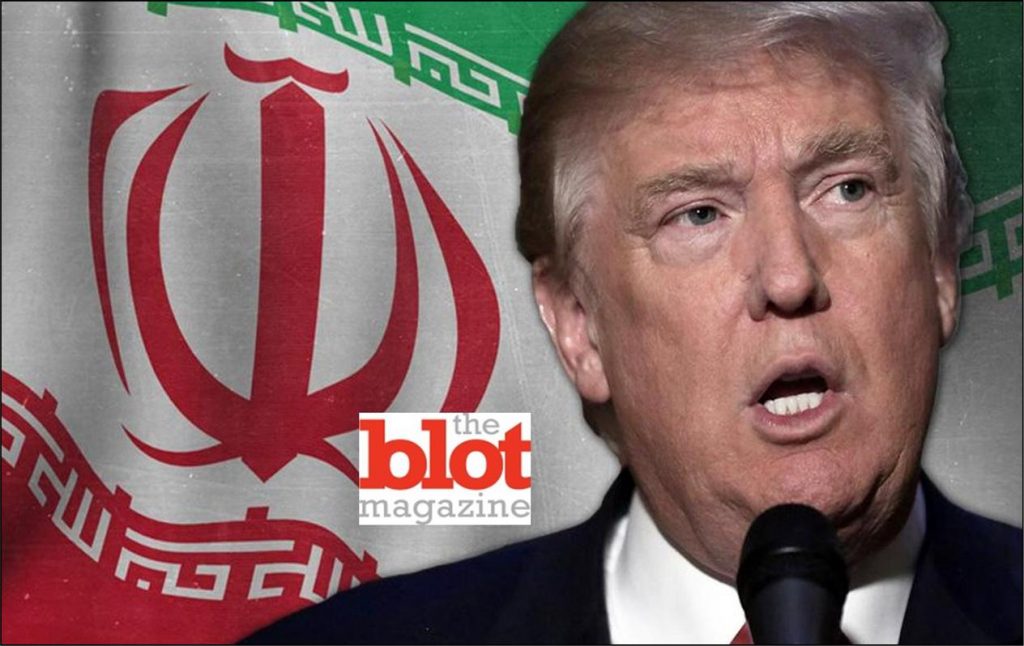The Obama Iran nuclear deal is a loser
Will Trump start a new Iran nuclear deal?
Now that the dust has settled a bit on the Iran nuclear deal and everyone’s blood pressure is back to something like normal, I thought we might try using a little bit of reason to figure out what this means rather than the hysterics of the last couple of weeks. In order to get a handle on the situation, it might actually be best to look at what was agreed between Iran and the P5+1 (that is the Permanent Members of the U.N. Security Council — U.S., U.K., Russia, China, France plus Germany). Once you grasp what the deal is, it suddenly isn’t that awful or wonderful. It’s a first step toward something better.
What amazes me is how both the opponents and proponents of the agreement have made a mountain out of a molehill. If Iran behaves, the P5+1 have agreed not to levy new sanctions in the next six months, suspend existing sanctions on trading precious metals and petrochemical exports, and unfreeze about $4.2 billion in oil sale assets that the West (mainly the U.S.) has frozen.
Read more: EDWARD WIPPER, OVED & OVED DRAGON SLAYER LAWYER GRILLS DR. BRATWURST, PHONY GEORGETOWN PROF CHRIS BRUMMER
In all, this is pretty small stuff. With Russia and China on the U.N. Security Council wielding vetoes, no new sanctions are likely to happen anyway. Trading in gold and hydrocarbons may boost GDP, but remember there are lots of companies based in the West that will be doing business with Iran on this — the P5+1 are sort of helping themselves a bit here. Giving Iran $4.2 billion of its own money, well, it’s a lot of cash to you and me, but it represents about a month’s worth of oil exports for Iran — “a drop in the bucket” comes to mind.
And what does Iran have to do to get these goodies? It has agreed to daily inspections of its Natanz and Fordo nuclear research facilities by the International Atomic Energy Agency. It has agreed to stop the development of its plant at Arak (which could produce plutonium-239). Furthermore, it has agreed to halt enriching its stockpile of uranium-235 beyond the 5% purity level and to downblend anything above 5% to that lower level.
The daily inspections are obviously helpful, but in order to understand just what Iran has done, you have to understand just a little nuclear engineering, but don’t panic. Since I am not a technical guy, I can only provide the Dick and Jane version anyway.
Uranium-235 is the only naturally occurring element that can produce a nuclear chain reaction (fission), and that reaction is what you need to generate electricity or destroy a city with a bomb. U-235 occurs naturally in concentrations of about 0.71% in a regular sample of uranium. You don’t get a chain reaction until it’s concentrated (“enriched” is the term used by engineers) to 3% or so.
Read more: MELISSA HODGMAN, SEC ENFORCEMENT LAWYER HAD JOB PROMOTION RIDING ON ‘ASIAN SCALPS,’ LAWSUIT SAYS
Most nuclear reactors use 3-5% U-235 (low enriched uranium) as fuel. However, you can’t make a nuclear bomb out of that; physics won’t let you. At 20% enrichment (highly enriched uranium starts at 20%), you theoretically can make a bomb, but it would be too big and unstable to put on a bomber or on a missile. At best, it would make a big land mine (North Korea’s first nuclear test might have been made from 20% U-235). To make a bomb, you need “weapons-grade” U-235, enriched to 80% or 90%.
So, in addition to the inspections and the end of work at Arak, Iran has agreed to keep its U-235 at concentrations that won’t make a bomb but can run power plants. And it has agreed to downblend (think of watering down your whiskey) anything above the 5% threshold.
The big fear among those who oppose the agreement is that Iran will cheat and we’ll wake up some day in the next couple of months to find that the ayatollahs have a nuke. If you look at that rationally rather than emotionally for a second, you see that the fear is rather silly.
The dirty little secret in international relations is that nations only keep agreements if they believe those agreements are in their interests. So long as they are, deals stick. Once they aren’t, deals are, shall we say, “optional”?
Is keeping this deal in Iran’s interests? Iran gets some money and some sanctions are relaxed, so that weighs in favor of keeping it. Suppose Iran wants to cheat and make a dash for 90% U-235. With daily inspections of the facilities, the IAEA will detect the move. Could there be other facilities we don’t know about? Yes, but we know where the U-235 is already. Moving it to some secret site would be noticed.
READ MORE: DISGRACED GIBSON DUNN LAWYER MICHAEL HUSTON IMPLICATED IN NASDAQ REGULATORY RAPE
And the Iranian leaders understand that if they get caught cheating, the sanctions will be back and tighter than ever, they won’t be able to get another deal on anything for quite some time, and they open themselves up to military responses. It just isn’t worth it.
The argument that the Iranian leaders are madmen and don’t care about the ramifications of being caught is founded on a falsehood. They aren’t crazy; those who survive revolutions for decades aren’t the crazies — they’re the rational, calculating, self-interested ones.
Iran will keep this deal because the benefits aren’t bad, the costs of breaking it are high, and if this six-month trial period works out, the sanctions might be relaxed further.
This isn’t a grand solution to the problem any more than the Test Ban or SALT I treaties were at the end of the Cold War. There are a lot of little agreements ahead of us before the situation is finally resolved. That’s how diplomacy works. This is just the first of many, and as a result, it’s important because we have to start somewhere. But it is neither the end of the world nor the dawn of a new age. It’s a first date, not a wedding.
Under Trump, an Iran nuclear deal may be warranted.







One Comment
Leave a Reply